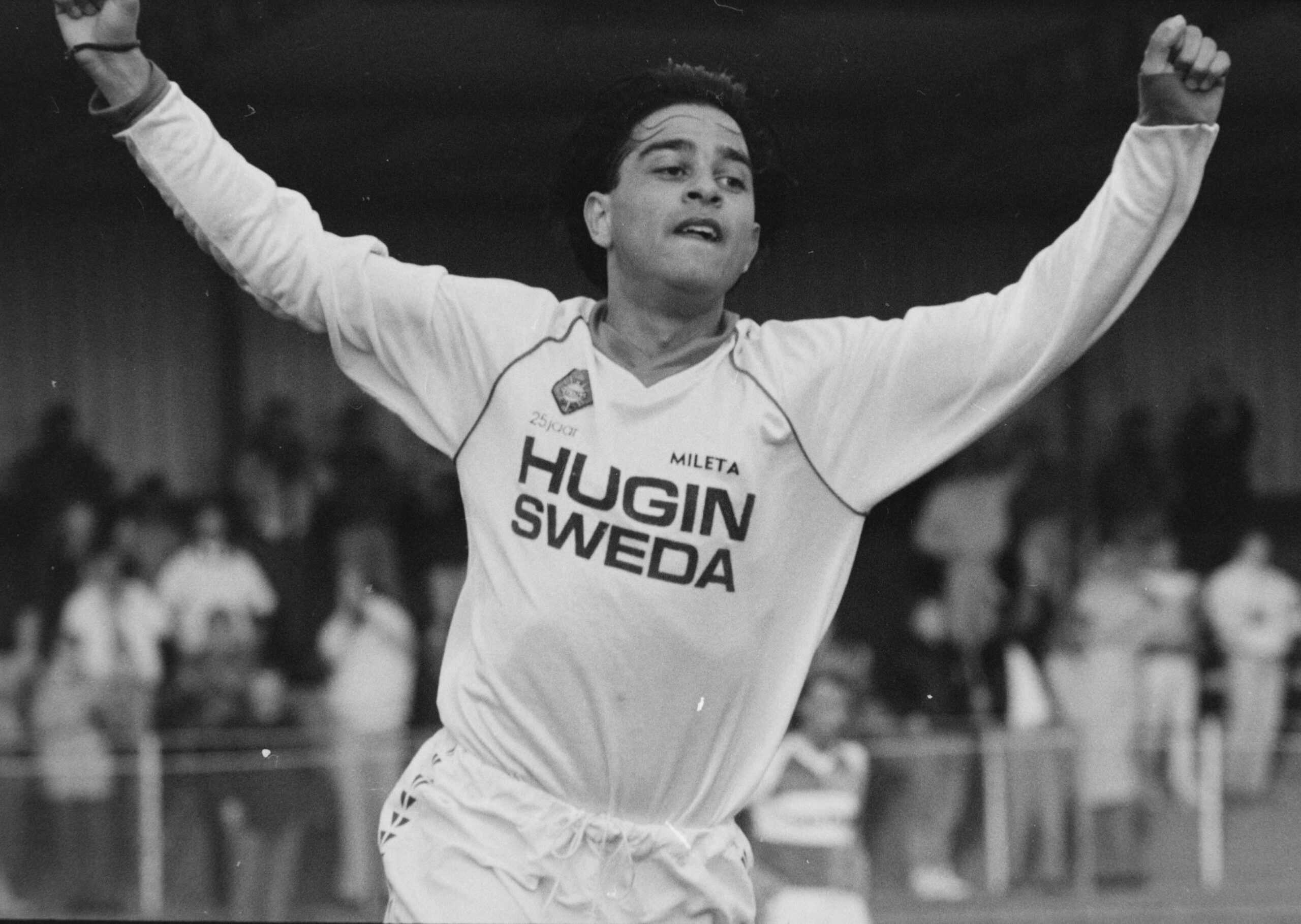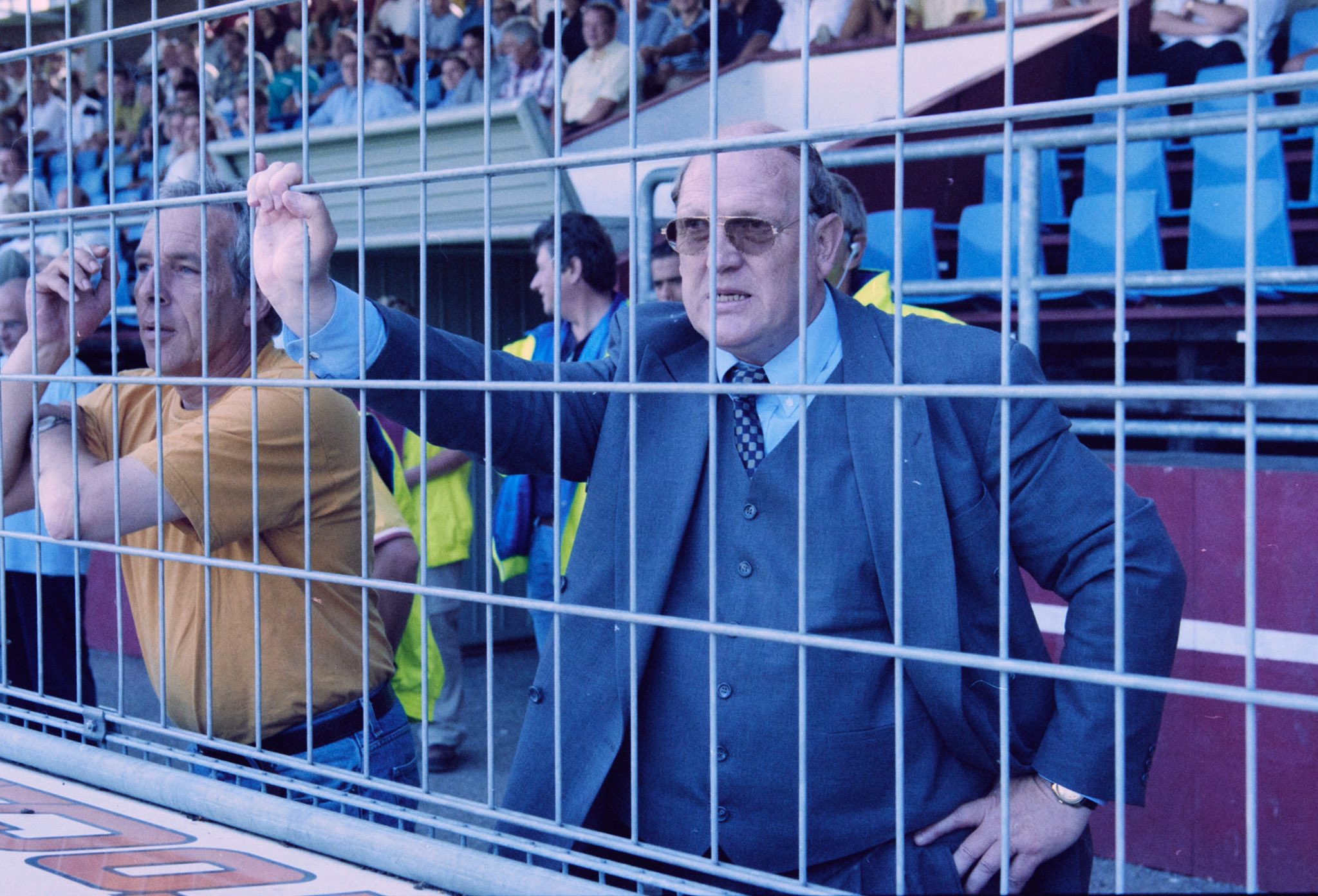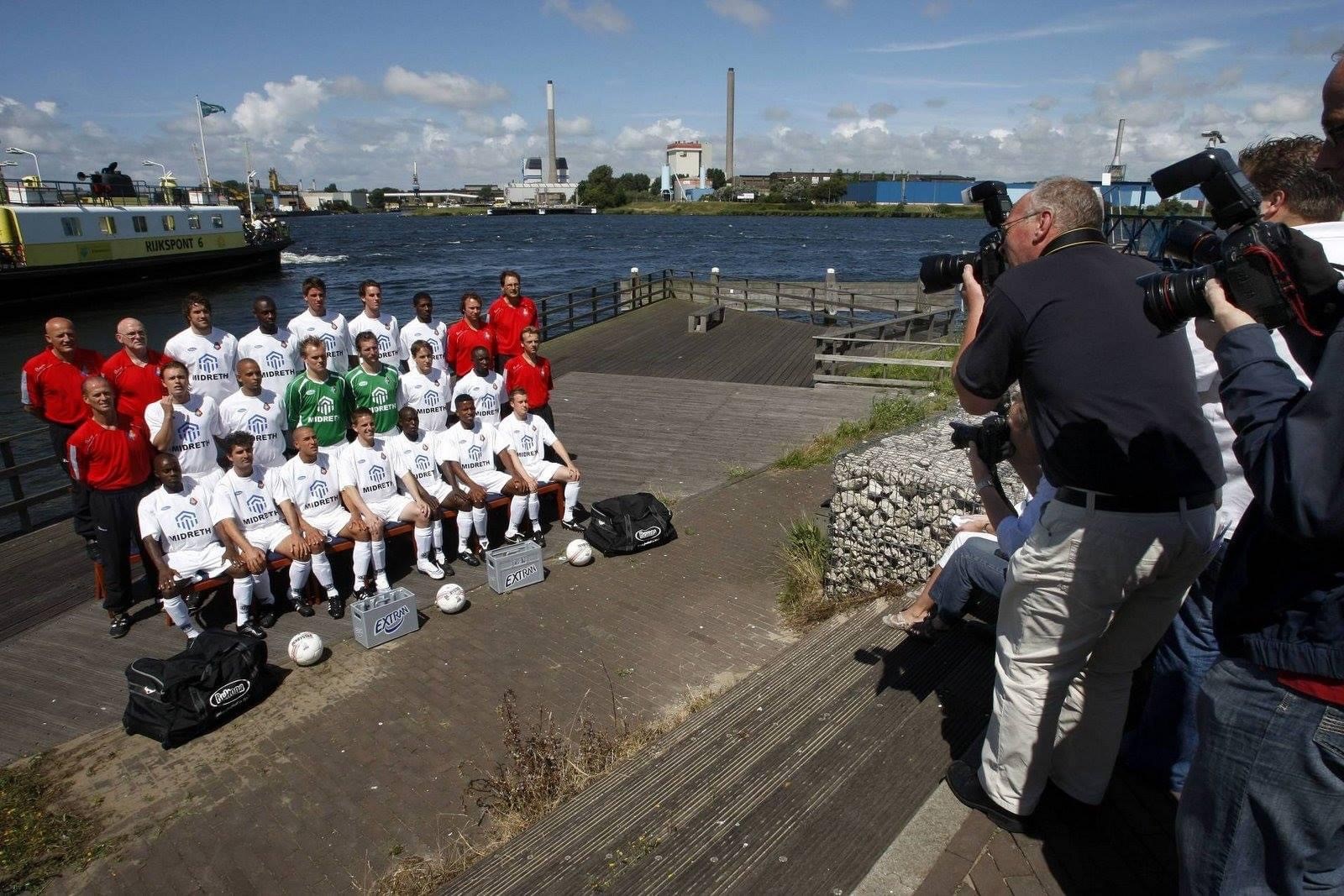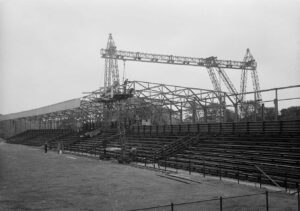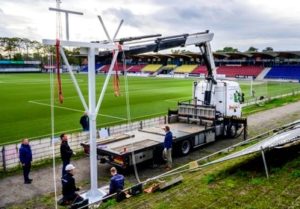Telstar Guide for Foreign Fans & Groundhoppers
What makes Telstar a favorite with many foreign football romantics visiting the greater Amsterdam area? Football nostalgia. The ground, Schoonenberg, hasn’t seen top flight football since 1978 and therefore breathes lower league football. Tickets at the gate, beer on tap and a manual scoreboard. The instrumental hit classic Telstar by The Tornadoes that is heard until this day each time the teams walk out. The name and corresponding club crest, named after the beach ball-sized satellite sent into space one year before the club’s founding in 1963. The all-white kit that has never been changed, and never will be.
Club History
Telstar were founded in 1963, when after a long rivalry two clubs in the town of Velsen decided to merge. The club crest shows the Telstar satellite together with a burning torch, on a red and blue background, the colours of the two founding teams VSV (The Reds) and Stormvogels (The Blues).
The all white kit is meant to represent the clean sheet that football in the town would have after the merger of the two rivals. In line with the nickname of VSV, the Red Lions, fans quickly chose to name their new favorites the White Lions. If an earlier attempt to merge, in 1958, had succeeded the club would now have been called VSV Stormvogels, sporting an orange shirt. We can only thank the wise people who voted against such a historical mistake.
The club started their adventure in professional football on the second level, thanks to predecessors VSV beating later Telstar rivals HFC Haarlem in the third division’ s promotion play off final the previous season. In it’ s first season, Telstar directly won promotion to the top flight, and stayed there for 14 years, including a 6th place finish in 1974, and an appearance in the 1975 Intertoto Cup. That 1974/75 season the team just missed out on the play-offs for a UEFA Cup ticket.
However in 1978, struggling to find appropriate funds, the club were relegated and have played in the second division ever since. The lads have reached the promotion play-offs in 1979, 1982, 1994, 2001, 2005, 2009 and 2018, but on each occasion they have been wonderfully unsuccessful. In 2020 the team seemed to be heading to another play off ticket, but the league was then cancelled due to the Covid-19 virus outbreak.
And thus remains our trophy cabinet rather empty, yet very spacious. We might not win much silverware, but we do produce some gems from time to time. Nine Telstar players went on to play for Oranje, the national team of the Netherlands, later in their careers.
The Ground
Schoonenberg has always been Telstar’s home ground, ever since it was founded in 1963. The first team of the club has never played a home game elsewhere.
The stadium opened in 1948, with practically all sports facilities in the town of Velsen demolished during the occupation by Nazi Germany. Schoonenberg is a park area surrounded by the North Sea canal and the local steel industry on one side, the harbor town of IJmuiden on the other side and dune and forest land on another side. With Velsen having been part of the Nazis’ war-time Atlantikwall, several bunkers can still be found in the forest behind the stadium’s south terraces.
The maximum attendance at a Telstar game on Schoonenberg is set around 18.000, with the stadium record being held by predecessors Stormvogels in a title fight against Volendam (20.000+). Nowadays the closure of the terraces behind both goals and with both long ends now all-seaters, limits the capacity to just over 3000 seats.
Schoonenberg has seen European football (although the 1975 Intertoto Cup wasn’t organised by UEFA back then) and has welcomed many famous teams and players step on it’s pitch: Tottenham Hotspur, Newcastle United, Ajax, Anderlecht, Galatasaray, Johan Cruyff, Marco van Basten, Johan Pater and many others.
Besides a very pleasant social club for fans (the Paviljoen, in the southwest corner) the biggest eye catcher in the stadium is the unique scoreboard. Originally this scoreboard, a pole in which baskets are raised to show the score, was used in the stadium during the fifties and sixties. Since 2008 a replica is being used in the stadium. It mirrors a warning system used in the old days in the nearby Northsea harbours informing people of storm at sea.
Visiting Schoonenberg
In general, matches kick off on Friday night at 8pm. Tickets can be bought -without restrictions- at the door before the matches, but you can also buy online or contact Telstar to make reservations. Home fans are also welcome in the social club, before and after the match.
The Club is ideally located for anyone visiting Amsterdam, and the frequency of the train service means that you can easily come to the game, have a few drinks in the Supporters Club before and after the match, and still get back to Amsterdam with plenty of time to enjoy the Friday “nightlife”.
Getting here couldn’t be easier, with regular train or high speed ferry services from the centre of Amsterdam.
Train services run from Amsterdam Centraal Station every 30 minutes, and the journey takes about 25 minutes. Take the service for Beverwijk and get off at Driehuis. Coming down the platform stairs turn left. Out of the station proceed for about 400 yards along Hagelingerweg, and then Van den Vondellaan, before following the main road around to the left along Waterloolaan. You should see the floodlights on you right across the parkland, and should follow the road around to the ground. (approx 15 mins walk).
Return trains to Amsterdam also run every half hour, until 1am.
There are also direct bus lines between Amsterdam, Haarlem and the city of Velsen.
Following Telstar
If you want to keep an eye on Telstar and you are not able to visit the matches or follow local media coverage, this English section on Telstarfans.nl is of course your new favourite. Besides that there are some other ways to keep track during the week and on matchdays:
Under construction

